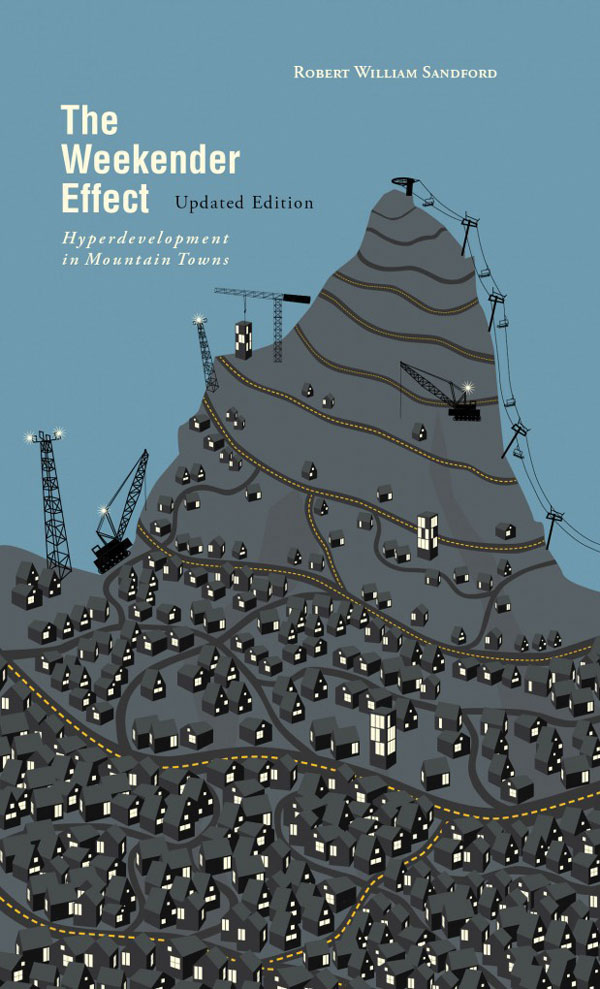As the EPCOR Chair for Water and Climate Security at the UN University Institute for Water, Environment and Health, and as the author of dozens of books and articles about western Canadian environmental issues, Robert Sandford is a legend in mountain communities. His 2008 manifesto The Weekender Effect: Hyperdevelopment in Mountain Towns sounded an alarm at the speed of change in small communities special because of their connection to and respect for wild spaces. Widely read and discussed, Sandford’s short but powerful book became essential reading for those who wanted to save what was best about their mountain places.
In his 2023 updated edition of The Weekender Effect, Sandford concludes that the damage of development has been worse than he feared. He and his contemporaries worried about their home of Canmore becoming a tourist town, but they never thought to worry about Canmore becoming a full-fledged city. Sandford laments that a place where locals once recognized every person in the grocery store—and stopped in the middle of the street to visit—has indeed become a busy city with grid street neighbourhoods at odds with the natural landscape, citizens more interested in talking about their property values than their favourite trails, and strangers who do not prioritize the natural beauty and the simple lifestyles that make mountain communities special. People who have loved Canmore and called it home for decades can no longer afford to live there.
The tragedy that has befallen Canmore is not unique but part of a global phenomenon, intensified by the pandemic-response of people with financial means fleeing cities in search of less populated spaces.
Despite Sandford’s worst fears coming true, the updated edition of The Weekender Effect does not give in to the temptation of despair. Sandford adroitly avoids that worst pitfall, the loss of hope. He even occasionally manages outright optimism, highlighting positive changes he had not anticipated, such as the constructive impact weekenders and retirees have made on mountain communities and the way the beautiful mountain landscapes have continued to inspire artists.
But Sandford is never naively optimistic. This updated edition chronicles in harsh detail the damage done and warns how much worse development could get in the future. Sandford holds the locals who love these places, himself included, partially responsible for the rapid and devastating paving of paradise.
Without offering a way forward, The Weekender Effect might simply be a diatribe against development, appealing only to readers who already vehemently oppose development. But Sandford avoids that pitfall too. He explains that the road to recovery for these communities will require strong leadership, shared vision, intense commitment and a lot of hard work. The final chapters of the updated edition give specific advice and steps readers can take to return, gradually, to happier and heathier communities that value trees above dollars. In an intriguing fly-fishing analogy, Sandford advocates a “catch and release” approach to enjoying mountain towns.
Sandford’s colloquial style and passion for the topic create an engaging and energetic read. Because The Weekender Effect feels like a visit with a friend on a mission, it’s fitting to arrive at its conclusion and find not an academic “Bibliography” but a more comfortable and appealing “Bookshelf.” Sandford’s bookshelf houses some of North America’s best nature writers and poets: Rick Bass, Don McKay, Wallace Stegner, thinkers who influence and articulate Sandford’s own love for wild spaces. Imagine how different the future of Canadian mountain towns could look if politicians and developers valued bookshelves such as the one shared by Sandford.
Angie Abdou is the author of This One Wild Life (ECW).
_______________________________________


